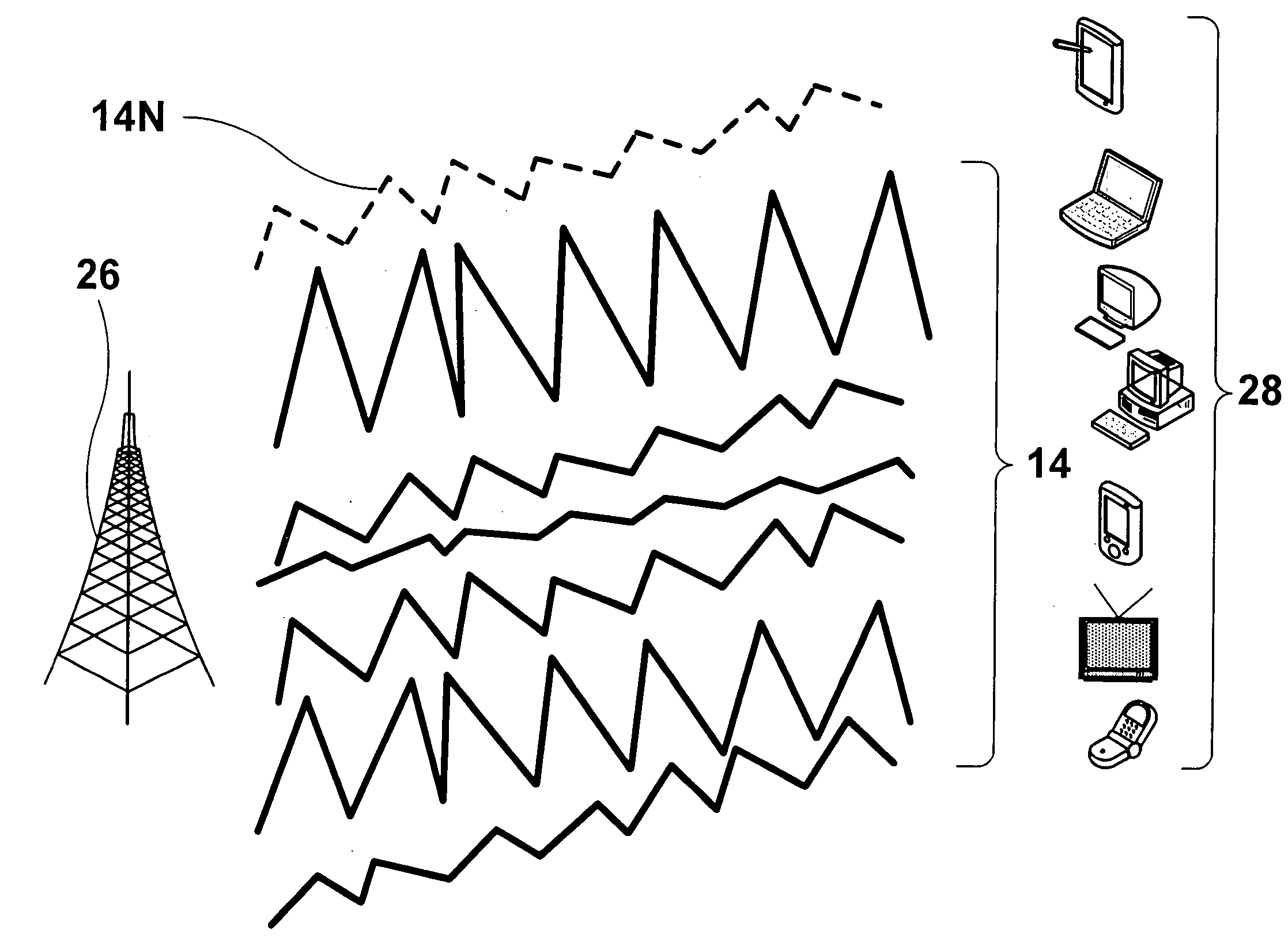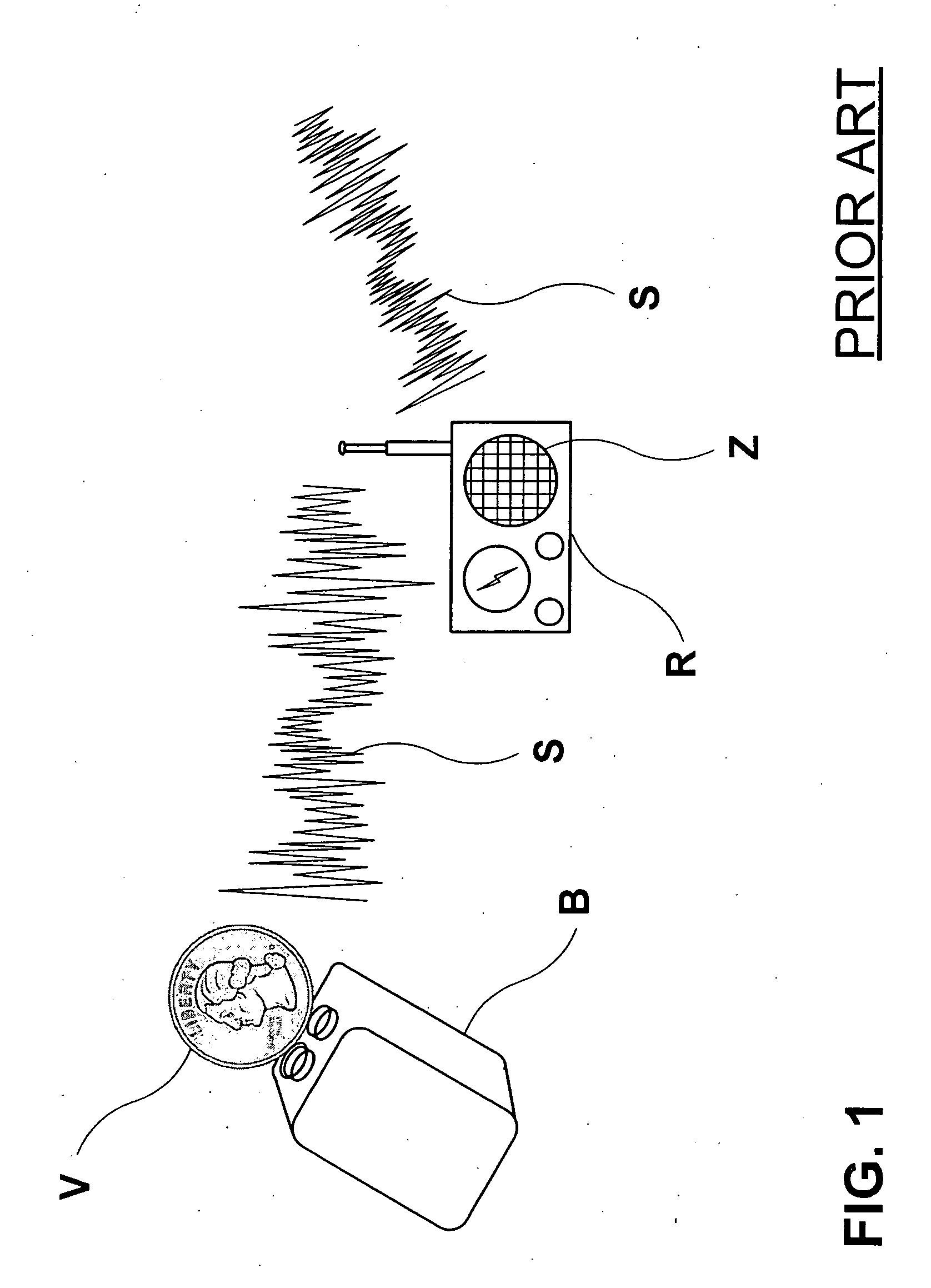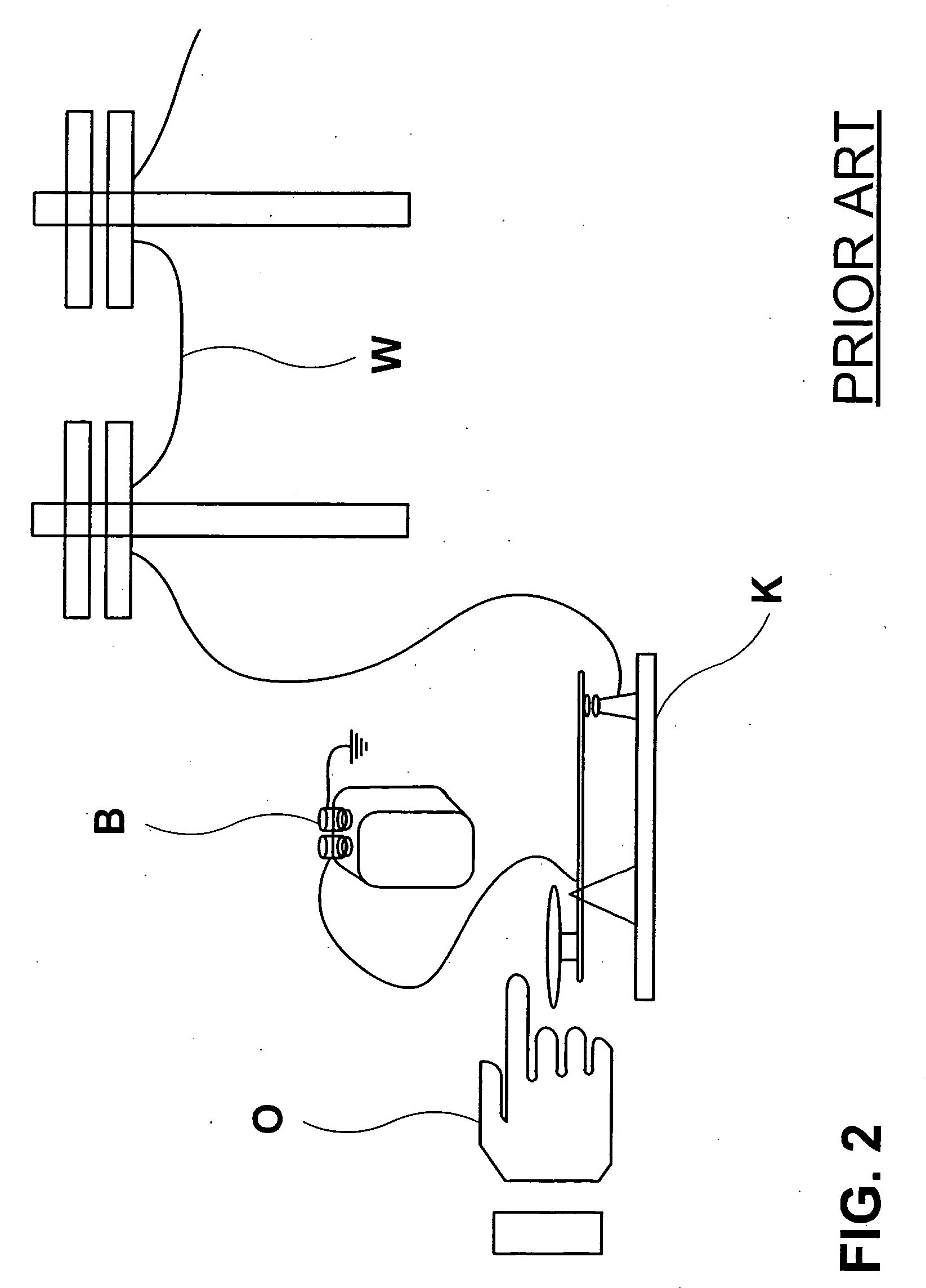Digital radio system
a radio system and digital technology, applied in the field of radio communication methods and apparatuses, can solve the problems of inconvenient use, inefficient utilization of scarce spectrum resources, and inherent limitations of modern wireless communications systems
- Summary
- Abstract
- Description
- Claims
- Application Information
AI Technical Summary
Benefits of technology
Problems solved by technology
Method used
Image
Examples
Embodiment Construction
I. Basic Chirp Waveforms.
[0172] The Digital Radio System uses “chirp” waveforms to provide high-speed, wireless communications that meet the requirements stated above. The use of the term “chirp” is intended only as a distinctive or descriptive term, and is not intended to limit the scope or description of the present invention. In the most basic embodiment of the invention, chirp waveforms 10 are used to convey a digital message of “one” or “zero.” In general, a chirp waveform 10 may be described as having the following qualities: [0173] Dimensions [0174] Continuity [0175] Boundaries [0176] Family [0177] Duration [0178] Slope [0179] Meaning [0180] Multiplicity
Dimension
[0181] A dimension is the space into which a chirp is mapped. Dimensions may be represented graphically by a set of Cartesian Coordinate Axes, x and y. The minimum number of dimensions for a chirp is always two. More advanced embodiments of the invention may utilize chirps having three or more dimensions.
Continui...
PUM
 Login to View More
Login to View More Abstract
Description
Claims
Application Information
 Login to View More
Login to View More - R&D
- Intellectual Property
- Life Sciences
- Materials
- Tech Scout
- Unparalleled Data Quality
- Higher Quality Content
- 60% Fewer Hallucinations
Browse by: Latest US Patents, China's latest patents, Technical Efficacy Thesaurus, Application Domain, Technology Topic, Popular Technical Reports.
© 2025 PatSnap. All rights reserved.Legal|Privacy policy|Modern Slavery Act Transparency Statement|Sitemap|About US| Contact US: help@patsnap.com



